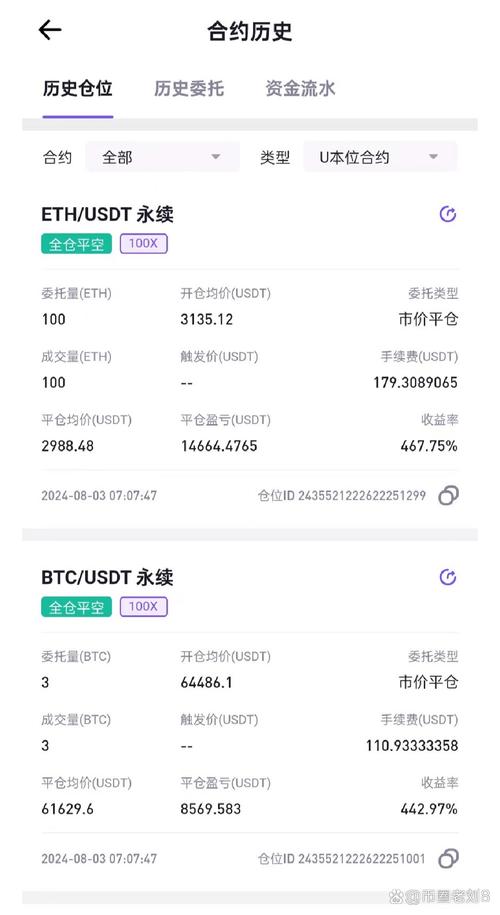
Understanding the Bitcoin and Ethereum Correlation: A Detailed Insight
When it comes to the cryptocurrency market, Bitcoin and Ethereum are two of the most prominent players. As investors and enthusiasts, it’s crucial to understand the correlation between these two digital assets. This article delves into the multifaceted relationship between Bitcoin and Ethereum, providing you with a comprehensive understanding of their correlation.
Market Dynamics
Bitcoin and Ethereum have been closely correlated in the past, but their relationship has evolved over time. To understand their correlation, let’s look at some key market dynamics.

| Market Dynamics | Bitcoin | Ethereum |
|---|---|---|
| Market Cap | Market leader with the highest market cap | Second-largest market cap after Bitcoin |
| Transaction Volume | High transaction volume due to its widespread adoption | High transaction volume, especially with the rise of DeFi and NFTs |
| Network Security | Strong network security with a large number of nodes | Increasing network security with the Ethereum 2.0 upgrade |
As you can see from the table, both Bitcoin and Ethereum have strong market positions and transaction volumes. However, their network security and market dynamics differ, which can influence their correlation.
Historical Correlation
Historically, Bitcoin and Ethereum have shown a strong positive correlation. This means that when Bitcoin’s price increases, Ethereum’s price tends to increase as well, and vice versa. However, the correlation has not been perfect, and there have been instances where the two assets have moved independently of each other.
One reason for the historical correlation is that both Bitcoin and Ethereum are considered safe havens in times of market uncertainty. When traditional financial markets are volatile, investors often turn to cryptocurrencies, leading to a surge in demand for both Bitcoin and Ethereum.
Factors Influencing Correlation
Several factors can influence the correlation between Bitcoin and Ethereum. Let’s explore some of these factors:

-
Market Sentiment: The overall sentiment in the cryptocurrency market can significantly impact the correlation between Bitcoin and Ethereum. For example, during the 2017 bull run, both assets experienced substantial growth, leading to a strong positive correlation.
-
Regulatory News: News regarding regulations can have a significant impact on the correlation. For instance, if a major country announces strict regulations on cryptocurrencies, it can lead to a sell-off in both Bitcoin and Ethereum, causing a negative correlation.
-
Technological Developments: Technological advancements in both Bitcoin and Ethereum can influence their correlation. For example, the Ethereum 2.0 upgrade is expected to improve network scalability and security, which could positively impact Ethereum’s price and, in turn, its correlation with Bitcoin.
-
Market Supply and Demand: The supply and demand dynamics of both Bitcoin and Ethereum can affect their correlation. For instance, if there is a sudden increase in demand for Ethereum due to a new application, it could lead to a positive correlation with Bitcoin.
Conclusion
In conclusion, Bitcoin and Ethereum have shown a strong positive correlation in the past, but their relationship is influenced by various factors. Understanding the market dynamics, historical correlation, and factors influencing their correlation can help you make informed decisions as an investor. Keep in mind that the cryptocurrency market is highly volatile, and correlations can change over time.



